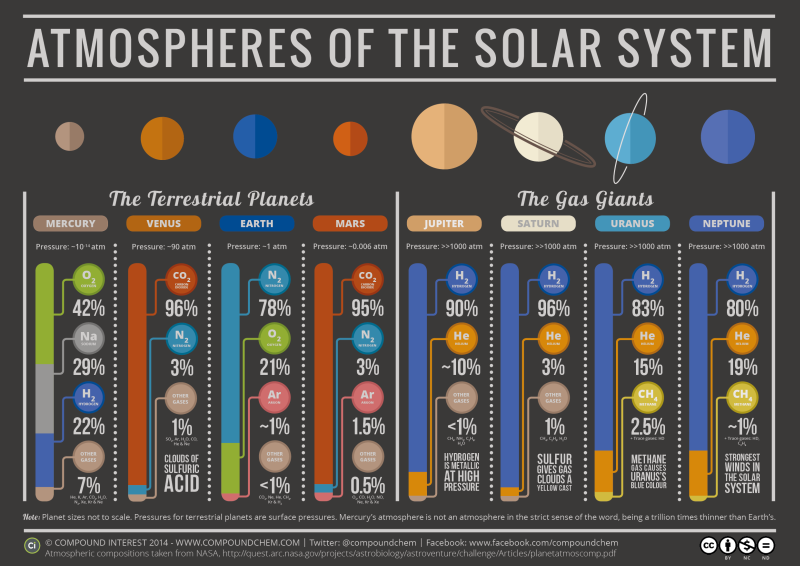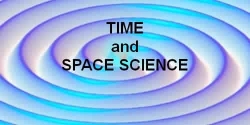Solar System
Solar System
Note: Earth Science Australia is not an astronomy site.This content is meant to stimulate interest from an earth science perspective.
Many excellent astronomy site are available...see Links page..
see
also Kepler's Laws of Planetary Motion...
see also
The Eight Motions of the Earth...
see also The
Sun...
see also
the Stars...
The Astronomical Unit
Bode's Rule
What Is A Planet?
Mercury
Venus
Earth
Moon
Mars
Jupiter
Saturn
Uranus
Neptune
Former Planet Pluto and the Plutinos
The Solar System: Minor Bodies
Comparison of Planet
Properties
see
also Meteorites...
see also Comets...
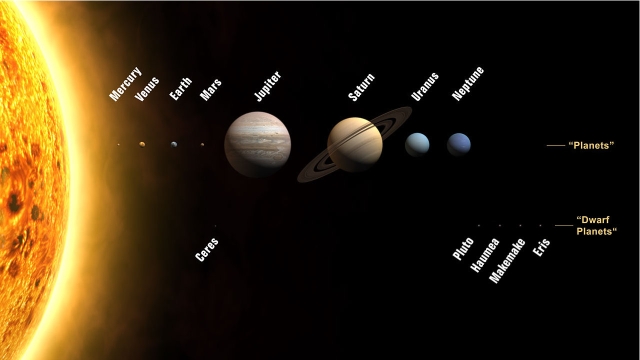
Before the true distance of the Earth from the Sun was known, and what the true distances in the Solar System were, relative distances were measured by the Astronomical Unit. It still is the most meaningful way to understand the scale of the Solar System
The Astronomical Unit:
The mean distance of the Earth from the Sun. This distance is defined to be 1 A.U.


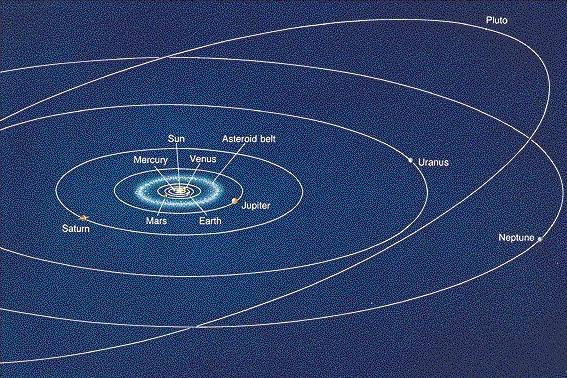
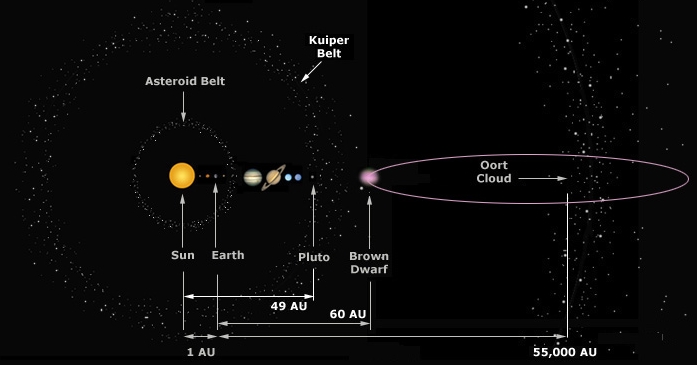
Conjunctions and Orbits

Bode's Rule
In 1772, the German astronomer Johann Bode found an empirical rule, dubbed Bode's Rule, that does a remarkable job of "predicting" planetary positions in the Solar System.
1. Write down a sequence of 4s, one for each planet except Neptune, including one for the asteroids.
2. Add the sequence 0, 3, 6, 12, 24, ….
3. Divide these numbers by 10.
The result is the relative distance of each object from the Sun, to a surprising degree of accuracy!

What Is A Planet?
We all have heard that the Sun has nine planets circling around it, but what exactly is a planet?
Planet: A non-stellar body larger than a certain size (roughly 1,000 to 3,000 km), orbiting around a star as its primary host.
A List Of Important Numbers/Constants:
- Gravitational Constant: G = 6.67 × 10-11 N·m2/kg2
- Astronomical Unit:
- 1 AU = 1.49 × 1011 m
- Velocity Of Light: c = 3.00 × 106 m/s
- Mass Of Sun: M¤ = 2.00 × 1030 kg
- Radius Of Sun: R¤ = 6.96 × 108 m
- Mass of Earth: MÅ = 5.98 × 1024 kg
- Radius Of Earth: RÅ = 6.38 × 106 m
A Survey Of The Planets: Mercury
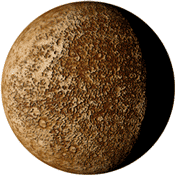

Notes: Very Small Magnetic Field, Past Cratering, Inter-Crater Plains - Past Geologic Activity.
A Survey Of The Planets: Venus


Notes: Thick Atmosphere, Little/No Magnetic Field, Evidence of Past/Present Geological Activity.
A Survey Of The Planets: Earth


Notes: Liquid Water In
Abundance, Life!
Earth's Moon

Moon Data:
Diameter 3475.6 Km (2159.7 miles)
Rotational period 27.322 days
Sidereal revolution period 27.322 days
Sinodic revolution period 29d12h44m2,9s
Mass (Earth=1) 0.0123
Volume (Earth=1) 0.0203
Gravity (Earth=1) 0.1653
Mean distance from Earth 384,400 Km (238,862 miles)
Minimum distance from Earth 356,410 Km (221,469 miles)
Maximum distance from 406,697 Km (252,717 miles)
A Survey Of The Planets: Mars
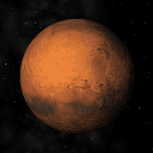
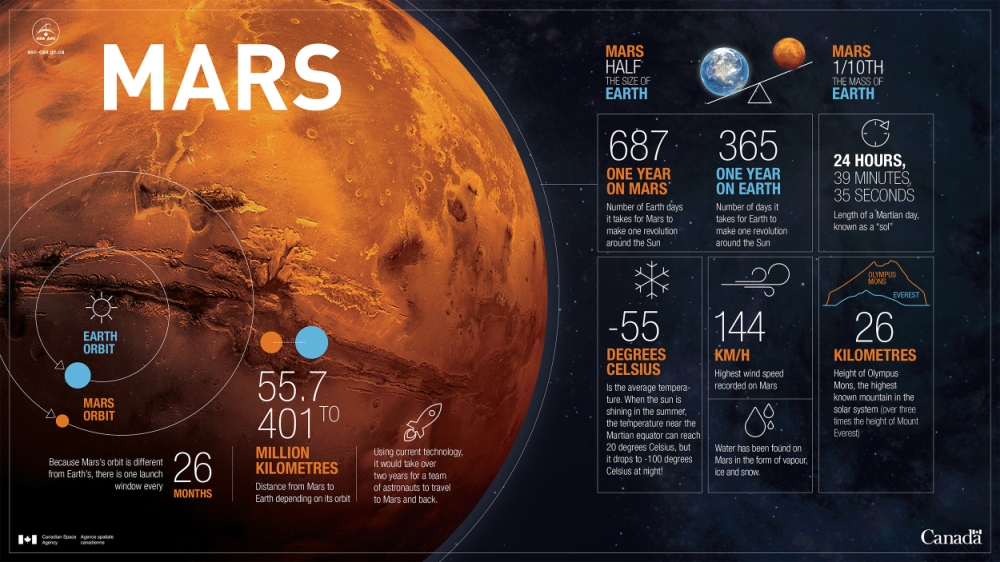
Above graphic shows Mars's and Earth's orbits around the Sun.
- Because Mars's orbit is different from Earth's, there is one launch window every 26 months.
- The distance from Mars to Earth is between 55.7 and 401 million kilometres, depending on its orbit.
- Using current technology, it would take over two years for a team of astronauts to travel to Mars and back.
- Mars is half the size of Earth.
- Mars is one tenth the mass of Earth.
- There are 687 Earth days in a year on Mars; that's how many days it takes for Mars to make one revolution around the Sun.
- There are 365 days in a year on Earth; that's how many days it takes for Earth to make one revolution around the Sun.
- The length of a Martian day, known as a "sol," is 24 hours, 39 minutes and 35 seconds.
- The average temperature on Mars is minus 55 degrees Celsius. When the sun is shining in the summer, the temperature near the Martian equator can reach 20 degrees Celsius, but it drops to minus 100 degrees Celsius at night!
- The highest wind speed recorded on Mars is 144 km/h.
- Water has been found on Mars in the form of vapour, ice and snow.
- The height of Olympus Mons, the highest known mountain in the solar system, is 26 kilometres, over three times the height of Mount Everest.

Notes: Evidence Of Abundant
Water In The Past, Spectacular Geological Features.
A Survey Of The Planets: Jupiter
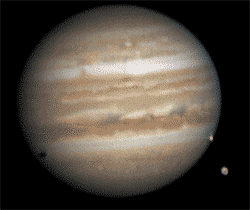
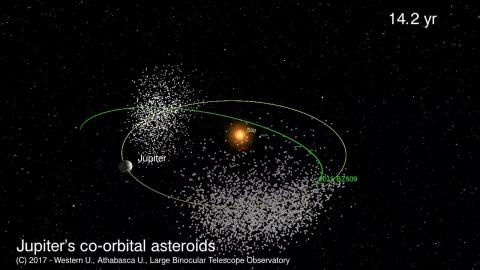

Notes: Largest Planet, "Mini Solar System", Fast Rotation
Ganymede - a moon of Jupiter
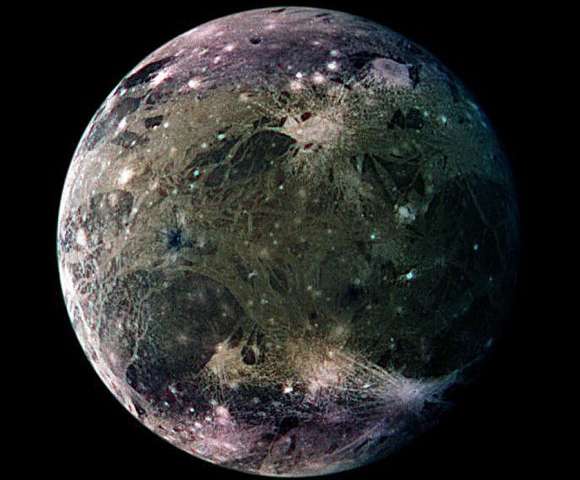
Moons with Atmospheres...
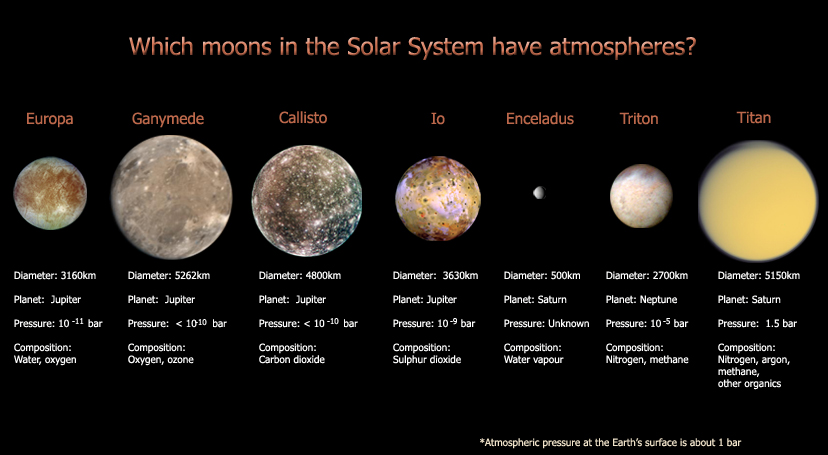
A Survey Of The Planets: Saturn
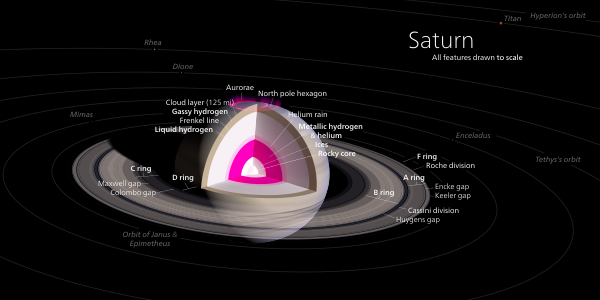

Notes: Very Low Density.
Moon: Titan
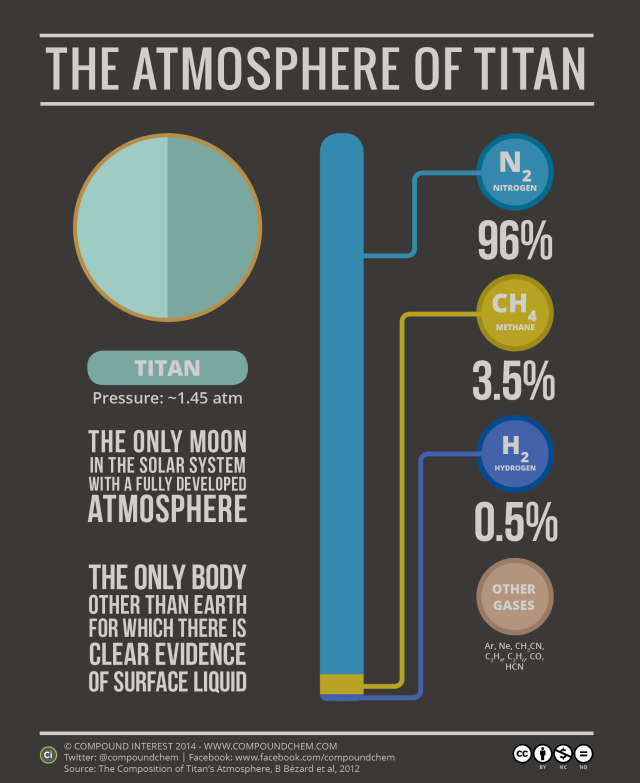
A Survey Of The Planets: Uranus


Notes: Rotates On Its Side!
A Survey Of The Planets: Neptune
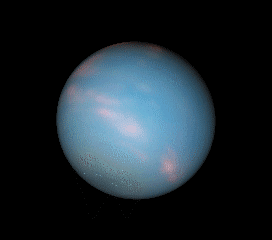

Notes: Fantastic Blue Color!
A Survey Of The Planets: Former Planet Pluto and the Plutinos
Pluto is no longer a planet In the 1990s, many "asteroids" or "cometary nuclei" approaching 1/4 Pluto's size were discovered.
Pluto crosses Neptune's orbit, like an asteroid or a comet.
Pluto is only 1/2 the size of our own Moon.
Seven planetary satellites are larger than Pluto.
Pluto has a highly inclined orbit.
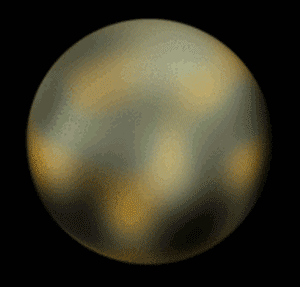

Notes: "Oddball" Planetoid - Small Size For Location, Highly Inclined Orbit.
The Plutinos - Pluto-like Planetoids
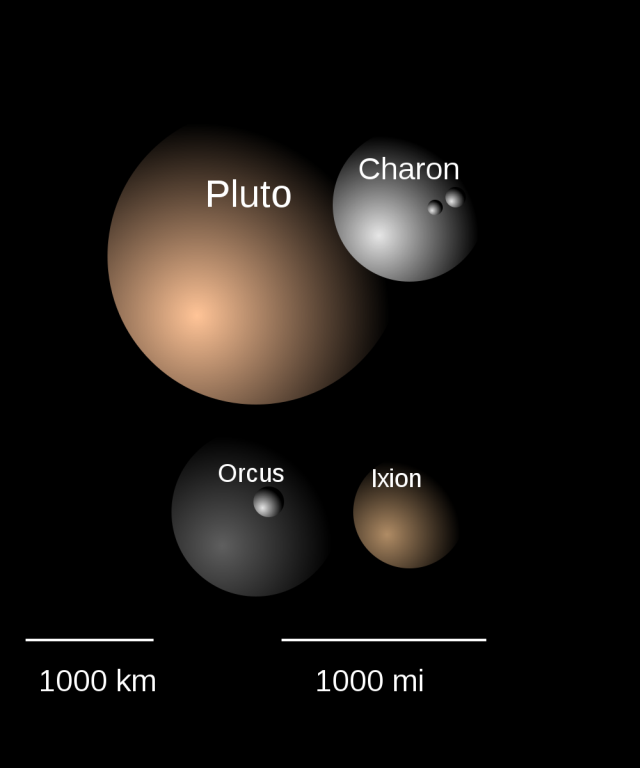
The Solar System: Minor Bodies
Dwarf Planet Ceres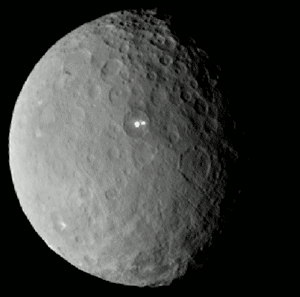
Asteroid

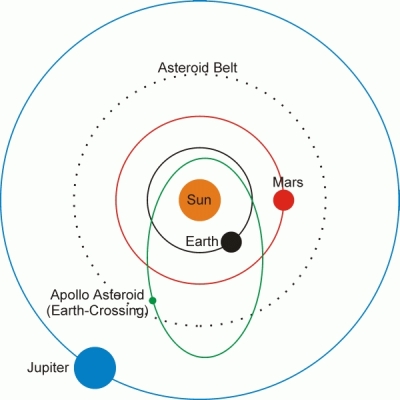
There is a lot of debris in the solar system, including meteoroids, asteroids and comets.
Asteroids: A small planetary body composed mostly of rock or metals; most orbit in the asteroid belt between Mars and Jupiter. All known asteroids have diameters less than 1,000 km. Lower size limit often taken to be about 10 m. Many unaltered since their formation - give clues to Solar System formation.
Trans-Neptunian Objects
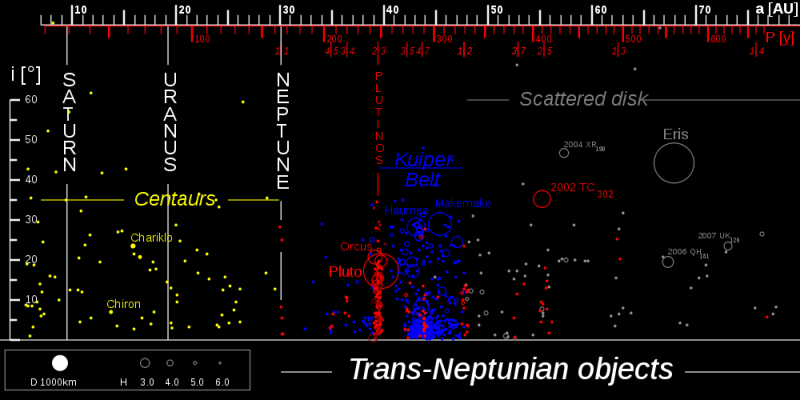
Kuiper Belt and Oort Cloud
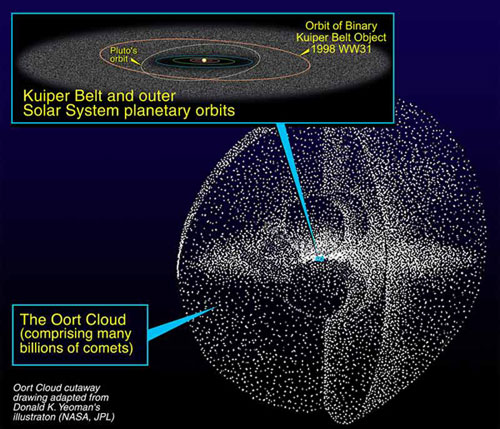
Orcus Motion
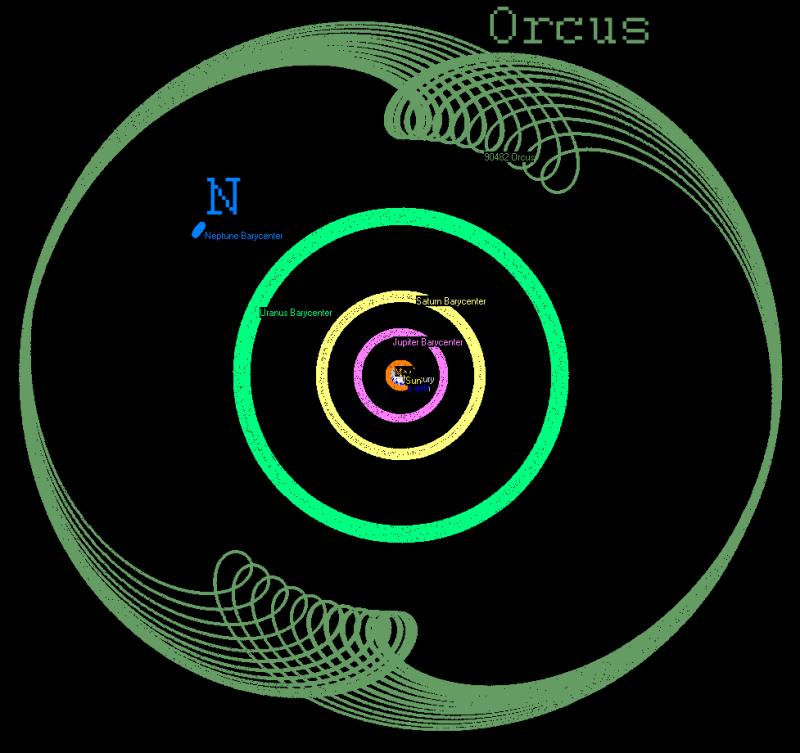
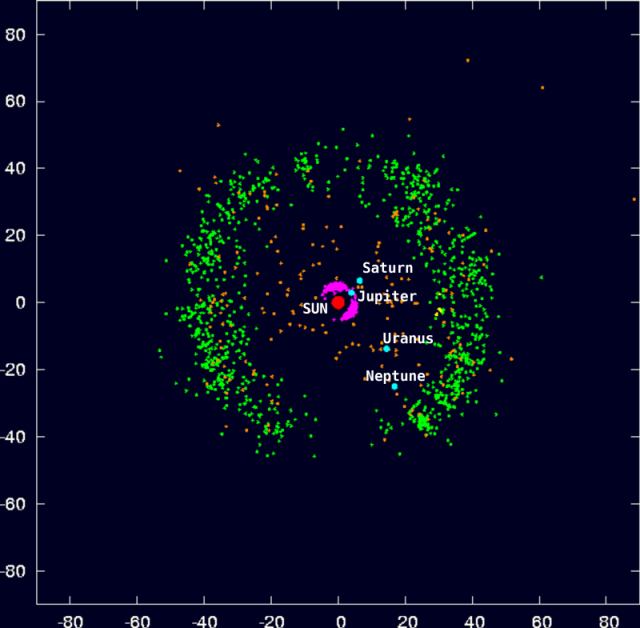
Meteoroids: A small, extraterrestrial, solid body. Term usually used for bodies smaller than a
kilometer, and frequently millimeters, in size. Objects destined to become meteors.
Comets: An ice-rich planetesimal that can emit an observable gaseous halo when its ice is warmed by the Sun. Most comets spend their time in the outer Solar System, making it difficult to distinguish them from normal asteroids.
Comparison of Planet Properties

